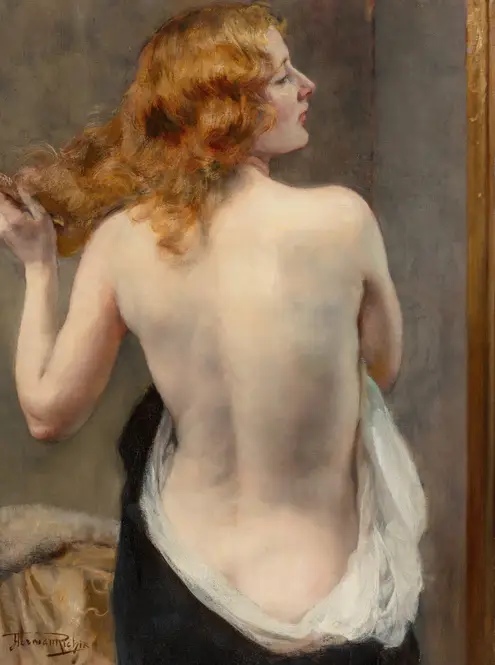Herman-Jean-Joseph Richir
Herman-Jean-Joseph Richir (1866–1942), Belgian, A master of academic painting and portraiture, this Belgian artist trained under the rigorous discipline of the Académie Royale des Beaux-Arts in Brussels, where he later became a professor himself. His work exudes a refined elegance, blending classical techniques with a subtle sensitivity to light and texture. Though less celebrated today than some of his contemporaries, his portraits—often of society figures and fellow artists—capture a quiet psychological depth, with brushwork that feels both precise and fluid.
Richir’s compositions frequently leaned toward allegory and mythology, though he avoided the grandiose in favor of intimate, almost introspective moments. His *Bacchante* series, for instance, reimagined classical themes with a soft, almost dreamlike quality, far removed from the bombast of 19th-century historical painting. Later in life, he shifted toward more modern influences, experimenting with looser strokes and warmer palettes, though never fully abandoning his academic roots.
Despite his technical prowess, his legacy remains somewhat overshadowed by the avant-garde movements of his time. Yet his influence persisted through his teaching, shaping a generation of Belgian artists who straddled tradition and modernity. Today, his works—scattered across European collections—offer a glimpse into a transitional era, where skill and subtlety held their own against the rising tide of abstraction.
Richir’s compositions frequently leaned toward allegory and mythology, though he avoided the grandiose in favor of intimate, almost introspective moments. His *Bacchante* series, for instance, reimagined classical themes with a soft, almost dreamlike quality, far removed from the bombast of 19th-century historical painting. Later in life, he shifted toward more modern influences, experimenting with looser strokes and warmer palettes, though never fully abandoning his academic roots.
Despite his technical prowess, his legacy remains somewhat overshadowed by the avant-garde movements of his time. Yet his influence persisted through his teaching, shaping a generation of Belgian artists who straddled tradition and modernity. Today, his works—scattered across European collections—offer a glimpse into a transitional era, where skill and subtlety held their own against the rising tide of abstraction.
-

Nude, seen from behind
Herman-Jean-Joseph Richir (Belgian, 1866–1942)A contemplative study of the human form, blending light and shadow to reveal quiet depth and texture.
